Spaghetti Vs Egg Noodles: Everything You Need To Know
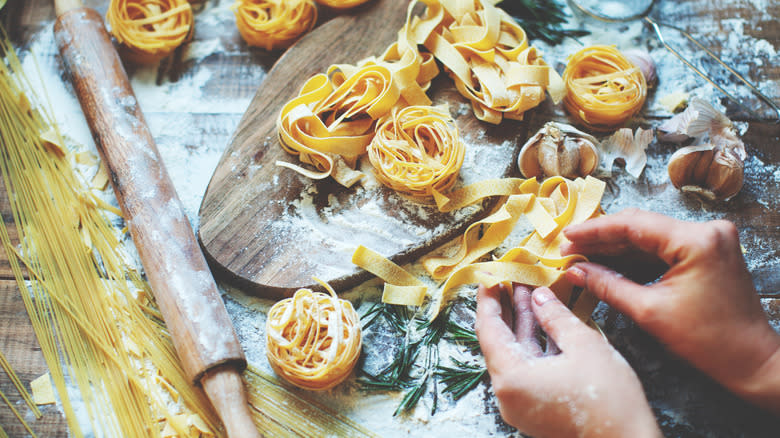
We may receive a commission on purchases made from links.
If you are ever looking for a way to really tick off an Italian, use the phrase "spaghetti noodle." While this is something that many Americans say without thinking much about it, this is almost as serious of a culinary "crime" as breaking spaghetti in Italy.
As a true Italian would be very quick to point out to you, a singular piece of spaghetti is not a noodle. It is, technically, a "spaghetto," even if no one really ever uses that word. Spaghetti is a form of pasta, and a noodle is something completely different... even if it might not seem that way at first glance. Egg noodles in particular have many different traits than their spaghetti cousins, the most notable of which is their characteristic ingredient: egg.
Spaghetti and egg noodles are two entirely different foods that belong in entirely different dishes. I learned this the hard way while studying pasta making in Italy, and I'm here to set the record straight.
Read more: 14 Liquids To Add To Scrambled Eggs (And What They Do)
What Is Spaghetti?
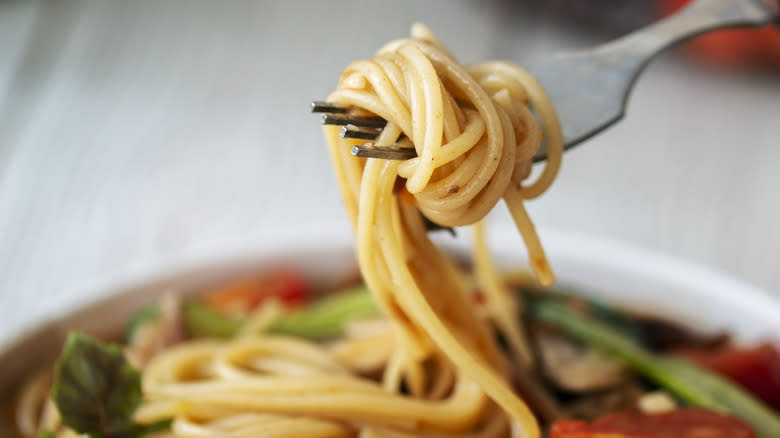
Spaghetti is a slender pasta in the shape of a very long, straight cylinder. Its name means "little cord," which makes total sense when you see the long, rope-like strands on your plate.
Most pasta historians will tell you that spaghetti originated on the island of Sicily, but some argue that this is not where it was invented. This now-ubiquitous pasta was most likely brought to Italy by the Arabs who conquered Sicily in the 700s. From Sicily, the pasta spread into the rest of Italy after its unification in 1861. The name "spaghetti" first made it into print in 1874, with the pasta having certainly been referred to by another name in the Sicilian dialect before that.
In these early years, spaghetti dishes were simple, with their sauces consisting of mostly just butter and cheese. Even though tomatoes have existed in Italy since the Colombian Exchange in the 15th and 16th centuries, spaghetti wasn't paired with tomato sauce until the late 1800s, after which this became the most popular spaghetti dish worldwide.
Even now, Italians still usually keep their spaghetti dishes simple. Americans, though, are particularly partial to spaghetti and meatballs –- a dish that many would be surprised to learn was invented in the U.S., not Italy.
Different Forms Of Spaghetti
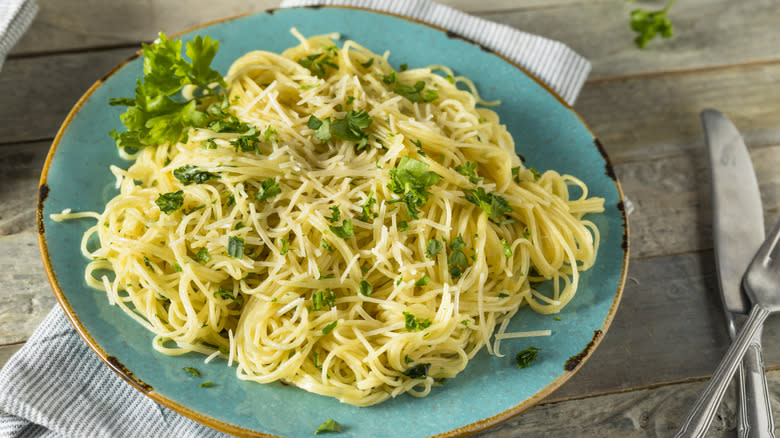
When most people think of spaghetti, they think of one thing: the popular and common spaghetti. Pasta connoisseurs, however, will tell you that is just the tip of the iceberg.
Spaghettoni, for instance, is a thicker version of spaghetti whose name can be translated to, fittingly, "big spaghetti." On the opposite end of the scale, there is spaghettini, which is "little spaghetti," a thinner, finer form. Then there is vermicelli (or, in Italian, "little worms" -– yum!), which is thinner still, and capellini, which is so thin that it is often referred to as "angel hair pasta."
Some consider bucatini to be a variety of spaghetti as well. This pasta is shaped like the spaghetti we all know and love, but resembles a straw. It has a hole that runs through the middle to better hold sauces like carbonara.
While most spaghetti variations are cylindrical, there is one that goes against tradition: spaghetti quadrati. This is "square spaghetti," which found in Italy in varying thicknesses, much like the original, and can be used in many of the same dishes.
What Are Egg Noodles?
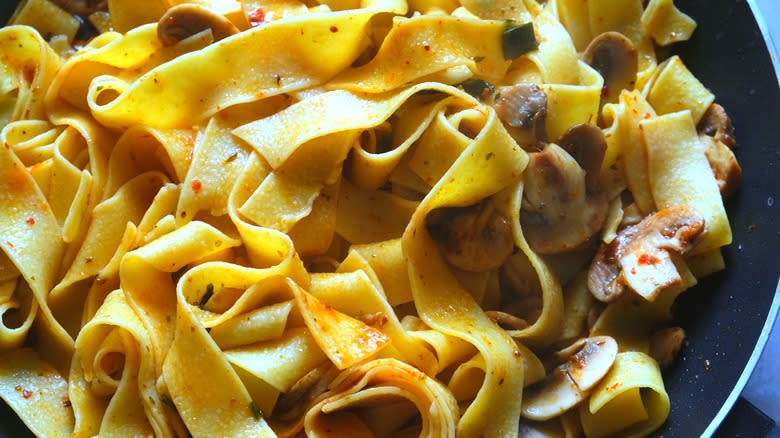
Like spaghetti, egg noodles have been around for quite a while. In fact, archaeologists discovered a bowl of noodles in China that was over 4,000 years old.
Most sources state that egg noodles originated in China during the Eastern Han period, which lasted from 25 to 220 BC, but they were also "invented" in other forms in Eastern Europe, Germany, and Turkey at different times, and in places that may not have ever had Asian influence. Each location has a different form of egg noodle that is considered to be traditional there, but all of them start with a dough made with flour and a large amount of eggs.
Egg noodles usually appear in long, flat, ribbon-like forms. However, there are many exceptions to this rule, such as the thin, string-like Youmian noodles from Asia.
When it comes to egg noodle etymology, the word "noodle" as we know it came into the English language in the 1700s. It was adapted from the German word "nudel," and has only grown in popularity ever since –- as have the dishes that use these delicious, eggy noodles.
Different Forms Of Egg Noodles
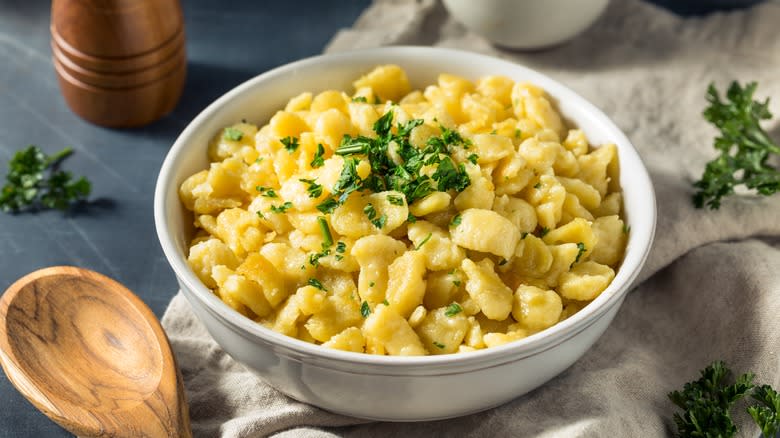
Egg noodles come in a wide range of sizes and shapes, but your "standard" egg noodle is a thick, broad ribbon of dough that can be either long or short. This kind is most often used in European and American dishes with thick sauces, meat, or vegetables.
Youmian breaks with this definition, however, and consists of very long, thin noodles (in fact, the name itself can be translated to "thin noodles"). This type of noodle is mostly used in Southern China and East/Southeast Asia, where it is paired with broth or used in stir-fry dishes.
Lokshen, on the other hand, is an Ashkenazi Jewish egg noodle that is common in dishes like kugel and chicken soup, and as a side dish to various meats. In the U.S., it is often used in tuna noodle casserole and can come in many shapes, like curly ribbons, wide, flat noodles, or even varnishkes, which look like bow-tie pasta.
Spätzle, which is common in Austrian, German, Hungarian, and Central European cuisine, is also considered to be an egg noodle. This type of noodle is usually short and irregularly shaped, and is often used as a side to saucy meat dishes.
Similarities Between Spaghetti And Egg Noodles
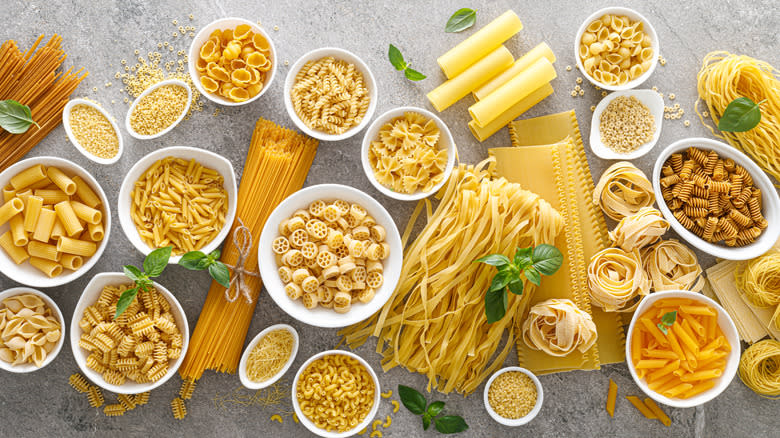
There are a lot of differences between spaghetti and egg noodles, but they have a lot in common as well. Both, for example, are made from working unleavened dough before rolling it out and forming it into shapes, either by hand or with a machine. They can also both be found in the same forms: raw, which means just made by hand; fresh, which means made previously but kept in the fridge or the refrigerated section of the grocery store; and dry, which has undergone a process to make it shelf-stable and able to last in your pantry for years.
Both spaghetti and egg noodles are also usually cooked the same way, which is, almost invariably, boiled in a big pot of hot, salty water. They are then both usually cooked a bit longer in a sauce of some kind, whether it be a simple one like melted butter, soy sauce, tomato sauce, or something more complex, like ragù or bolognese sauce. They can also both be served with meat or vegetables.
In other words, they are both the starchy foundation of a more complex dish. This is why they are often mistaken for being two different forms of the same thing.
The Difference Is In The Eggs
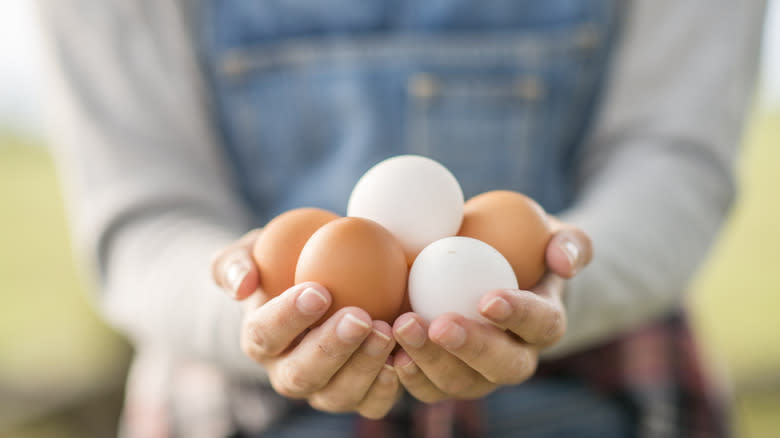
In spite of their many similarities, spaghetti and egg noodles are not the same. The most notable way that they differ is in the amount of eggs in the dough used to make them.
Spaghetti, for instance, typically does not call for any eggs in the dough. There are variations of homemade pasta that do include one or two eggs, used mostly to give the pasta color, but this rarely occurs with spaghetti, since it is a thinner pasta with a particular texture. Dry, store-bought spaghetti never contains eggs.
Egg noodles, on the other hand, got their name for a reason. While spaghetti is usually not made with dough that contains eggs, egg noodles ALWAYS have eggs in the dough. In fact, they are pretty much its defining feature. These eggs are used to give the noodles their trademark, bright yellow color, but also to add a richer flavor and a thicker texture. Typically, egg noodle recipes range from 1½ eggs per cup of flour to one egg and two egg yolks per cup of flour, making the ratio much higher than homemade pastas.
Spaghetti And Egg Noodles May Contain Different Types Of Flour
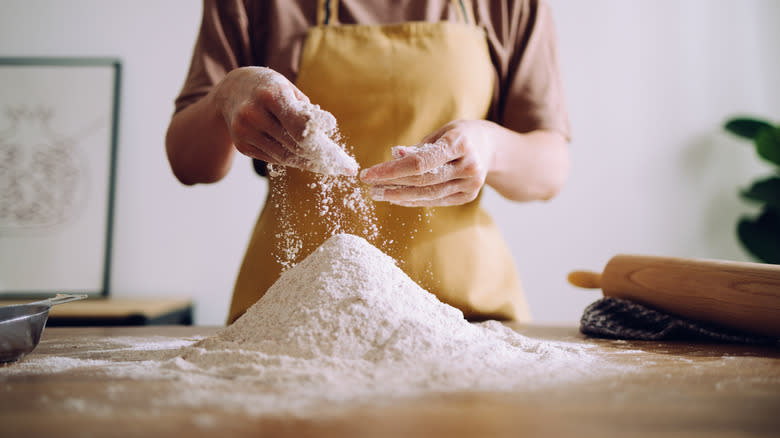
Aside from a difference in the amount of eggs in the dough, spaghetti and egg noodles also use different types of flour. Spaghetti almost always uses durum wheat flour, also known as semolina. Sometimes this wheat flour is combined with all-purpose flour or the finer, thinner, 00 flour, but most often the recipe keeps it pretty simple: semolina and water.
Egg noodles are a little more versatile. Since there are so many different versions of egg noodles spread all across the planet, even the most basic egg noodle recipe varies widely, with a myriad of different types of flour used either alone or in combination with others.
While this may seem like a big difference, it is not typically viewed as the definitive difference between spaghetti and egg noodles. That, as one might guess from the latter's name, would be the eggs.
Spaghetti And Egg Noodles Have A Different Texture When Cooked
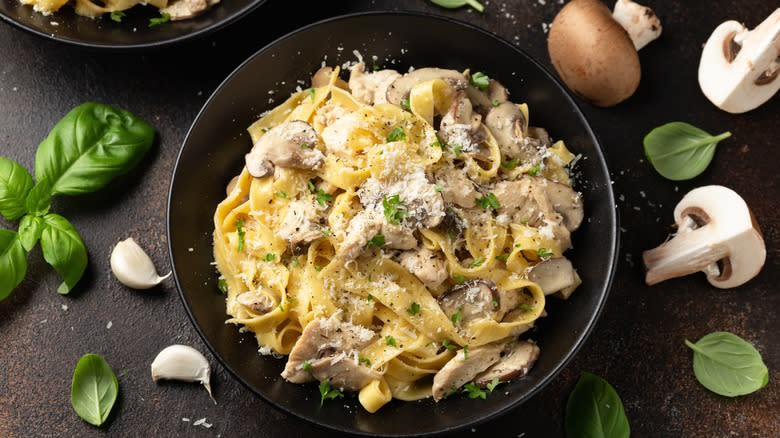
While spaghetti and egg noodles both have pretty similar beginnings in terms of dough, their textures when cooked are another story. If you ask Italians (which, you probably should, since they are the pasta experts), they will tell you that the perfect way to serve spaghetti is "al dente." This means still slightly hard, or just hard enough for you to actually have to, you know, chew it.
Egg noodles, instead, are always cooked until they are very soft and tender. They are meant to blend in with the sauce, meat, vegetables, or other elements of a dish as you eat it without standing out too much in terms of texture. This is why egg noodles are often used in casseroles or slow cooker meals. Overcooked spaghetti is no one's favorite dish (imagine a soft, swollen, drowned-looking piece of stringy pasta -– yuck), but it is very rare to find an overcooked egg noodle.
Which Is Healthier: Spaghetti Or Egg Noodles?

Spaghetti is made with just flour and water. Egg noodles are made with flour, water, and quite a few eggs. So, that means that spaghetti is the healthier of the two options, right? Well, it's not that simple.
When it comes to carbohydrates, spaghetti and egg noodles have very similar values. When considering dry, enriched spaghetti, the USDA reports that there are 38 grams of carbohydrates per cup of uncooked pasta. For dry, enriched egg noodles, studies show there are 40 grams of carbs per cup.
It's the same story when it comes to protein: both spaghetti and egg noodles have about 7 grams per cup. The calorie counts are close as well, with spaghetti weighing in at 196 calories and egg noodles just barely tipping the scale at 221. When it comes to fat, egg noodles beat out spaghetti, coming in at a little over 3 grams of fat while the latter only has a little more than 2 grams.
These enriched forms also provide important nutrients like iron, copper, and zinc, but that doesn't make them a health food per se. Both spaghetti and egg noodles share the same nutritional flaws: They are high in carbs and calories.
That being said, both can certainly make a good addition to your regular diet, but always remember to eat them in moderation. As for which is healthier, their nutritional values are almost exactly the same, so there is no winner or loser in this particular competition.
How Spaghetti Is Made
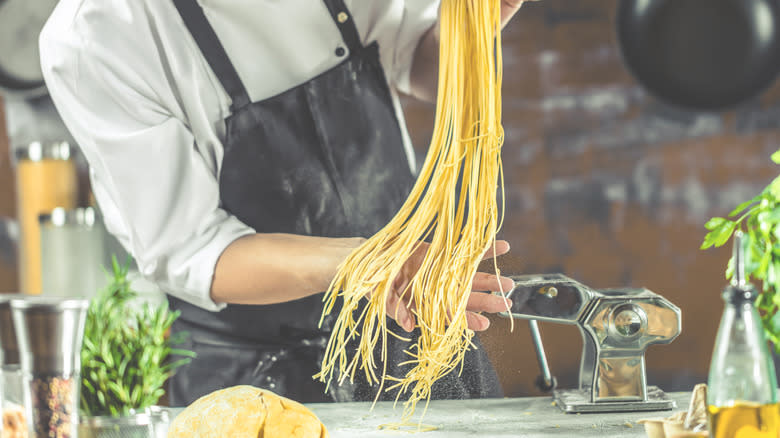
If you're wondering how the dry spaghetti you buy at the grocery store is made, the process is straightforward. First, semolina flour is mixed with water and the resulting dough is rolled between two large rollers to make it flat and to squeeze out excess humidity. Next, the pasta dough is pasteurized to enable it to last on a store shelf or in your pantry for years.
The spaghetti is then cut to around 25 to 30 centimeters (around 9.8 to 11.8 inches) long and dried slowly with hot air, which can take around 12 hours. It is then put into packages and sent out to stores, ready to be bought and cooked.
To make your own homemade spaghetti, put 2 cups of semolina flour (or all-purpose, if that's all you have) in a large bowl. Add a pinch of salt, then mix in around ½ cup of lukewarm water. Use a fork to combine, then knead the dough on a floured surface for around five minutes, until it becomes a nice, compact ball.
Let the dough rest for around half an hour. After that, most chefs use a spaghetti-making machine to do the rest of the work, since it results in more uniform pasta (and is a heck of a lot faster). However, you can make the pasta by hand by rolling it out and cutting it into strips with a sharp knife.
Whichever route you choose, the spaghetti will then end up in a pot of boiling water, where it will cook for 2 to 3 minutes. Then, just add sauce. Buon appetito!
How Egg Noodles Are Made
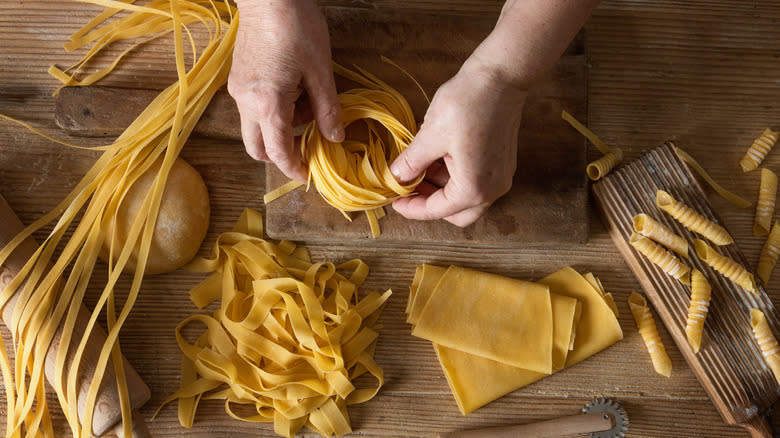
Industrially produced egg noodles follow much the same process as industrially produced spaghetti. First, flour is added to water to create a dough, to which eggs are also added. The dough is then rolled out into long, flat sheets, making sure to squeeze out any air bubbles that may occur. The dough is then pasteurized in a steamer to remove bacteria and ensure it's safe to keep on the shelf. Next, the dough is cut into the desired shapes and dried slowly in a tank. Then, finally, it is packaged and shipped to egg noodle lovers everywhere.
There are numerous ways to make egg noodles at home, but a basic recipe involves 2 cups of your desired flour (or flours) and a teaspoon of salt. Add in one whole egg and one egg yolk, along with around ¼ cup of water. Mix until the dough forms a ball, adding more water if necessary, then place it on a floured work surface and knead it until it is no longer sticky. Roll out the rough with a rolling pin to your desired thickness, then cut it into strips with a knife or a pizza cutter. When you're ready to cook them, bring a pot of water to a boil, add in the fresh noodles, and cook until they are soft, which is usually around 2 to 3 minutes.
Dishes That Work Best With Spaghetti
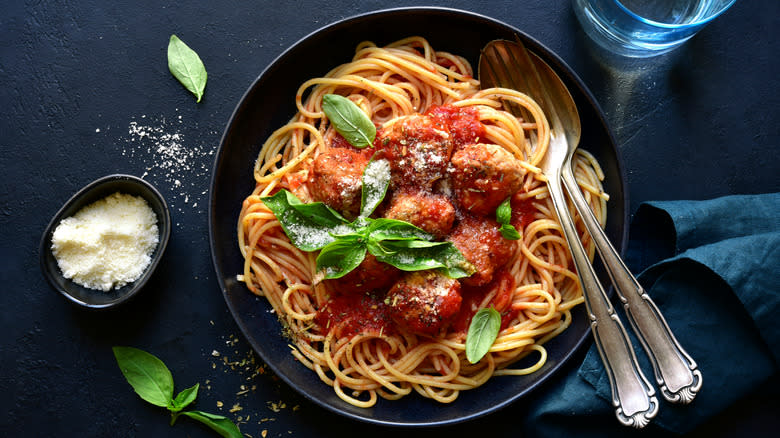
Since the dawn of spaghetti's time, it has been said it pairs best with light, simple sauces. While it was once mostly eaten with butter and cheese in Sicily, this is still a dish Italians sometimes eat today. In the summer, spaghetti is often served with aglio, olio, and peperoncino, which is garlic, olive oil, and red pepper flakes for a light, easy dish. This pasta is also favored for seafood dishes like spaghetti alle vongole (spaghetti with clams), which often has a light, oil-based sauce.
That's not to say that spaghetti can't carry a dish with a heavier sauce, though. While it is perhaps most famous for its use with simple tomato-based sauces, it is also seen in dishes with thicker, richer sauces like ragù, which is a meaty sauce that usually also contains peas, onions, and carrots. This sauce was most likely the first step toward America's favorite spaghetti dish: spaghetti and meatballs.
Dishes That Work Best With Egg Noodles
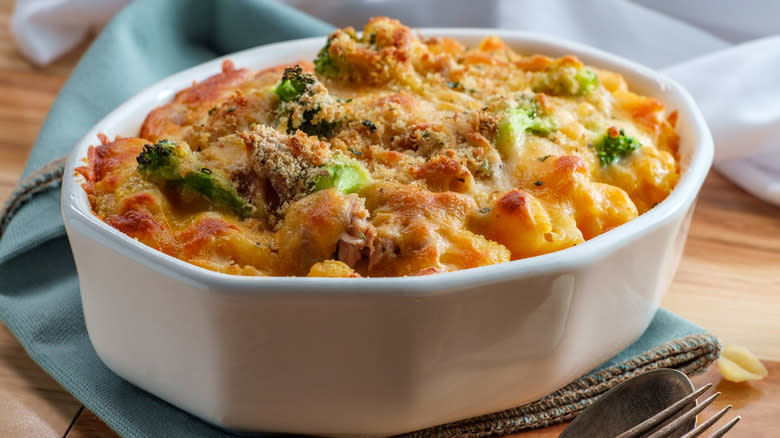
In some ways, it could be argued that egg noodles are more versatile than spaghetti, and not just because there are a huge variety of egg noodle formats. Egg noodles work best in dishes with thick, creamy sauces like stroganoff or in stews like beef bourguignon or goulash. The thicker, sturdier shape holds the sauce better, and the taste and consistency work to make an already rich dish even richer. Even Asian-style egg noodles are also used in a wide variety of dishes ranging from stir-fries to soups and more.
Store-bought egg noodles are also often used in "family meal night" classics like tuna noodle casserole, as well as kugel and other casserole dishes. Egg noodles are ideal for dishes you can make ahead of time, as they tend to reheat better than spaghetti, which tends to get overcooked on its second go-round on the stove.
Which Is More Popular: Spaghetti Or Egg Noodles?
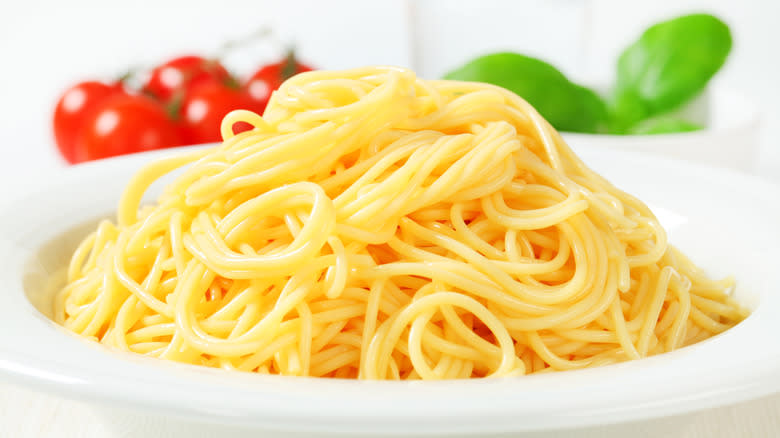
To say that either spaghetti or egg noodles are objectively better than the other is impossible. They are two different things that are enjoyed in different ways, and choosing one over the other is up to the individual eater.
It is, however, possible to state for a fact which one is more popular than the other. In fact, it is the most popular pasta in the world, and not just because it tastes good.
Thanks to the small number of ingredients it takes to make it as well as to the fact that those ingredients are easily accessible and relatively cheap, spaghetti is a very low-cost food. That low price tag makes it very appealing to consumers -– as does its versatility. Spaghetti can easily be incorporated into many different dishes without changing their flavor, as opposed to egg noodles, which have a stronger flavor.
Spaghetti is also very widespread thanks to Italian influence in the rest of the world. Immigration brought Italians to many different countries in the 19th and 20th centuries (such as the U.S. and Australia), and the Italians, as just one of their many gifts, brought spaghetti with them. Add to that the worldwide popularity of Mediterranean cuisine in general, and it's no surprise that spaghetti wins this saucy popularity contest.
Read the original article on Daily Meal.

